Composite ALMA and optical image of a young Milky Way-like galaxy 12 billion light-years away and a background quasar 12.5 billion light-years away. Light from the quasar passed through the galaxy’s gas on its way to Earth, revealing the presence of the galaxy to astronomers. New ALMA observations of the galaxy’s ionized carbon (green) and dust continuum (blue) emission show that the dusty, star-forming disk of the galaxy is vastly offset from the gas detected by quasar absorption at optical wavelengths (red). This indicates that a massive halo of gas surrounds the galaxy. The optical data are from the Keck I Telescope at the W.M. Keck Observatory.
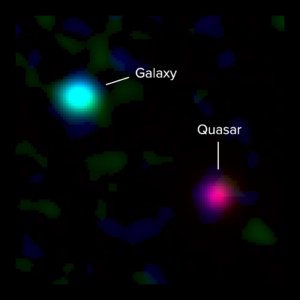
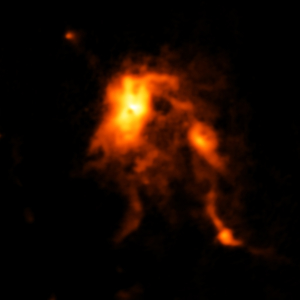
ALMA Image of the Glowing Dust Inside NGC 6334I
ALMA image of the glowing dust inside NGC 6334I, a protocluster containing an infant star that is undergoing an intense growth spurt, likely triggered by an avalanche of gas falling onto its surface.
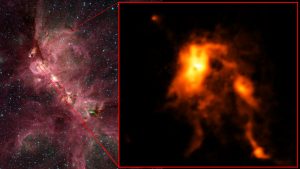
Protostar Blazes Bright, Reshaping Its Stellar Nursery
Inside the Cats’s Paw Nebula, as seen in an infrared image from NASA’s Spitzer Space Telescope (left), ALMA discovered that an infant star is undergoing an intense growth spurt, shining nearly 100 brighter than before and reshaping its stellar nursery (right).
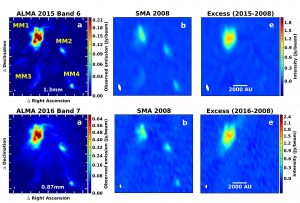
ALMA and SMA Images of NGC 6334I
Comparing observations by two different millimeter-wavelength telescopes, ALMA and the SMA, astronomers noted a massive outburst in a star-forming cloud. Because the ALMA images are more sensitive and show finer detail, it was possible to use them to simulate what the SMA could have seen in 2015 and 2016. By subtracting the earlier SMA images from the simulated images, astronomers could see that a significant change had taken place in MM1 while the other three millimeter sources (MM2, MM3, and MM4) are unchanged.
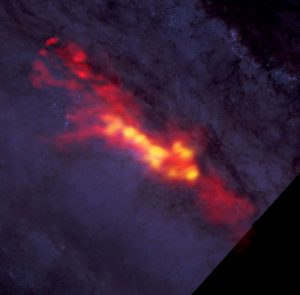
ALMA Sees Super Stellar Nurseries at Heart of Sculptor Galaxy
What is the recipe for starburst? Astronomers studied NGC 253 with ALMA to find out. These new ALMA data reveal a diffuse envelope of carbon monoxide gas (shown in red), which surrounds stellar nurseries — regions of active star formation (in yellow). By dissecting these regions with ALMA, astronomers are uncovering clues to the processes and conditions that drive furious star formation. The ALMA data are superimposed on a Hubble image that covers part of the same region.
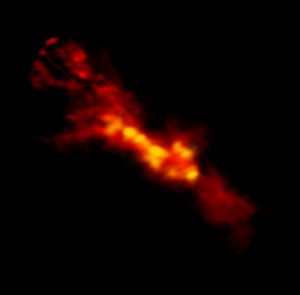
ALMA Sees Starbursting Clouds Inside NGC 253
ALMA image of starbursting clouds inside NGC 253. The red region is the lower density CO gas surrounding higher density star-forming regions in yellow.

